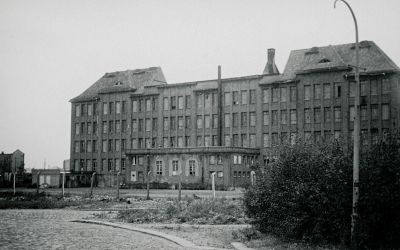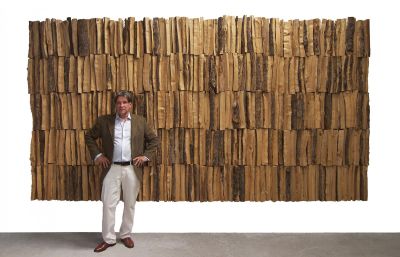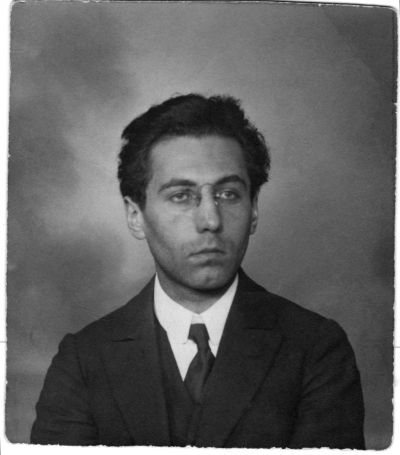A second look. Roland Schefferski in the Galerie Bernau
Mediathek Sorted




















When one peers into the exhibition room, the assemblages, objects and installations distributed motionlessly through the room seem almost casually arranged, as if positioned by accident. One work stands out particularly: A curtain consisting of two individual panels of material in series in smooth transition. On the left, the embroidered outline of a female person can be seen, on the right that of a male. Both exposed, they stand opposite and facing each other. The portraits seem like shadows which remain despite their exposure to light. Like trusted companions which the artist gives to the observer. A small gust of wind blows through the exhibition room, the sun blinks through the window and everything is subject to change. External natural influences stimulate something processual, creating a symbiotic moment in which the actual static work is transformed to a dynamic piece of work. The curtain starts to move as if the two people portrayed are starting a dance-like dialogue with each other. The wind blows the male line to the side. The polarities which were so close, suddenly gape apart and distance takes the place of closeness.
Overall, it is clear that Roland Schefferski’s background is in painting and sculpting, and his early aspiration to conquer the sheet of paper and two-dimensionality is still current today. The embroideries of the seemingly filigree portrait break with traditional notions of sculpture and drawing. The thread is his graphical means of expression and his strength is doubtlessly in reducing it to the elementary line. Outlines of people, broken down to the individual line, are no longer constrained to the actual people portrayed, but instead adopt an abstract character. What remains is the form of the human figure in the room.
With this dynamic and transformative work – but especially with the “Die Berliner” interaction – Roland Schefferski ties in with Oskar Schlemmer’s confrontation with the corresponding relationship of figure and room and with the limited movement of sculptural works, which has been a theme for him. Schefferski’s interaction represents an adventure that can actually be experienced, a participatory work that is only discovered by incorporating the person and the room as a living artistic process. Similar to Franz West’s “Passstücken” or Franz Erhart Walther’s “Werksätzen”, his works need to be used to be activated. Whilst they do not use the stylistic elements of Bauhaus, its fundamental concepts find a kind of continuation in them. In the founding manifesto and Bauhaus programme of 1919, Walter Gropius asked the question what is a room and how could it be captured and designed. Assuming that every work relates to something bigger, he referred to the room as such and to the relevance of including actual and spiritual means.
Roland Schefferski’s room-bound works that underlie the processual can be interpreted as an example of transferring the modern and its programmatic principles to the present. An art form, which is multi-layered and which is not ossified – on the contrary, by concentrating on the somewhat marginal, it tackles that which is essential in the philosophically existential sense. An art form which asks the observer to take a deeper look. Or even a second!
Annabell Burger, November 2019






















































































